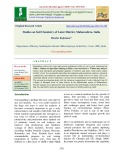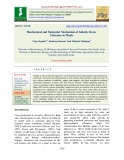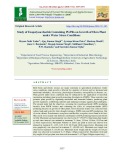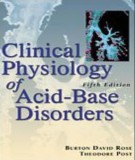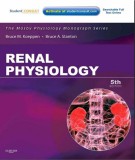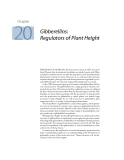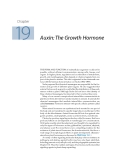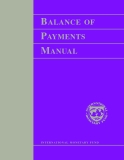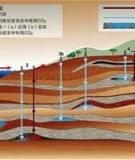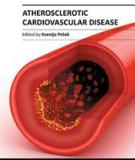
Regulation of water balance
-
Part 1 book "Nutrition for veterinary technicians and nurses" includes content: Nutrients and energy, water, carbohydrates, fats, protein and amino acids, vitamins, minerals, digestion and absorption, energy balance, nutritional requirements of dogs and cats, history and regulation of pet foods, pet food labels, nutrient content of pet foods, types of pet foods, raw food diets - fact versus fiction, pet food preservatives, homemade diets,... and other contents.
 142p
142p  muasambanhan02
muasambanhan02
 18-12-2023
18-12-2023
 5
5
 0
0
 Download
Download
-
Part 1 book "Canine and feline nutrition" includes content: Energy and water, carbohydrates, fats, protein and amino acids, vitamins, minerals, digestion and absorption, nutritional idiosyncrasies of the cat, energy balance, carbohydrate metabolism, fat requirements, protein requirements, vitamin and mineral requirements, history and regulation of pet foods, pet food labels, nutrient content of pet foods, types of pet foods, evaluation of pet foods, feeding regimens for dogs and cats, pregnancy and lactation, nutritional care of neonatal puppies and kittens, growth, adult maintenance.
 284p
284p  muasambanhan01
muasambanhan01
 11-12-2023
11-12-2023
 7
7
 3
3
 Download
Download
-
Part 3 book "Berne and levy physiology" includes content: elements of renal function; solute and water transport along the nephron - tubular function; control of body fluid osmolality and volume; potassium, calcium, and phosphate homeostasis; role of the kidneys in the regulation of acid base balance; introduction to the endocrine system; hormonal regulation of energy metabolism; hormonal regulation of calcium and phosphate metabolism; the hypothalamus and pituitary gland,... and other contents.
 413p
413p  oursky07
oursky07
 24-10-2023
24-10-2023
 4
4
 1
1
 Download
Download
-
Regarding yield of the crops and growth regulation fertility of soil is most important but today’s scenario of agriculture farming in India is not care about it. Without any analysis farmer used unwanted and abundant quantity of fertilizer and water, both results reduce fertility of soil. For sustainable agriculture development and production, analysis, chemical composition, micronutrient, macronutrients and micro fauna from soil is must. Soil is an important natural resource and plays a crucial role in maintaining environmental balance.
 4p
4p  nguaconbaynhay6
nguaconbaynhay6
 23-06-2020
23-06-2020
 14
14
 1
1
 Download
Download
-
Salinity is one of the most aggressive environmental stresses that hamper crop productivity worldwide. Increased salt concentration in soil reduces plants ability to take up water. It also reduces nutrients availability, uptake and transport, and there distribution resulting nutritional imbalance in plant. The Salt Overly Sensitive (SOS) signalling pathway is crucial to mediate cellular signalling and to maintain ion homeostasis under salinity stress. Many HKT family plasma membrane transporters play an essential role in salt tolerance mechanism by regulating Na+ and K+ transportation.
 6p
6p  nguaconbaynhay6
nguaconbaynhay6
 23-06-2020
23-06-2020
 12
12
 0
0
 Download
Download
-
Both biotic and abiotic stresses are major constrains to agricultural production. Under stress conditions, plant growth is affected by a number of factors such as hormonal and nutritional imbalance, ion toxicity, physiological disorders, susceptibility to diseases, etc. Plant growth under stress conditions may be enhanced by the application of microbial inoculation including plant growth promoting rhizobacteria (PGPR).
 38p
38p  gaocaolon5
gaocaolon5
 14-06-2020
14-06-2020
 18
18
 3
3
 Download
Download
-
(BQ) Part 1 of the document Clinical physiology of acid - base and electrolyte disorders presents the following contents: Renal physiology, regulation of water and electroltye balance. Invite you to consult.
 300p
300p  thangnamvoiva3
thangnamvoiva3
 28-06-2016
28-06-2016
 95
95
 6
6
 Download
Download
-
(BQ) Part 1 of the document Renal physiology presents the following contents: Physiology of body fluids, structure and function of the kidneys, glomerular filtration and renal blood flow, renal transport mechanisms - nacl and water reabsorption along the nephron, regulation of body fluid osmolality - regulation of water balance, regulation of extracellular fluid volume and nacl balance.
 132p
132p  thangnamvoiva2
thangnamvoiva2
 23-06-2016
23-06-2016
 55
55
 3
3
 Download
Download
-
THE EXTENT AND TIMING OF PLANT GROWTH are controlled by the coordinated actions of positive and negative regulators. Some of the most obvious examples of regulated nongrowth are seed and bud dormancy, adaptive features that delay growth until environmental conditions are favorable. For many years, plant physiologists suspected that the phenomena of seed and bud dormancy were caused by inhibitory compounds, and they attempted to extract and isolate such compounds from a variety of plant tissues, especially dormant buds.
 20p
20p  anhphuonggl
anhphuonggl
 11-04-2013
11-04-2013
 80
80
 6
6
 Download
Download
-
THE CYTOKININS WERE DISCOVERED in the search for factors that stimulate plant cells to divide (i.e., undergo cytokinesis). Since their discovery, cytokinins have been shown to have effects on many other physiological and developmental processes, including leaf senescence, nutrient mobilization, apical dominance, the formation and activity of shoot apical meristems, floral development, the breaking of bud dormancy, and seed germination.
 26p
26p  anhphuonggl
anhphuonggl
 11-04-2013
11-04-2013
 94
94
 7
7
 Download
Download
-
FOR NEARLY 30 YEARS after the discovery of auxin in 1927, and more than 20 years after its structural elucidation as indole-3-acetic acid, Western plant scientists tried to ascribe the regulation of all developmental phenomena in plants to auxin. However, as we will see in this and subsequent chapters, plant growth and development are regulated by several different types of hormones acting individually and in concert. In the 1950s the second group of hormones, the gibberellins (GAs), was characterized.
 32p
32p  anhphuonggl
anhphuonggl
 11-04-2013
11-04-2013
 77
77
 10
10
 Download
Download
-
THE FORM AND FUNCTION of multicellular organism would not be possible without efficient communication among cells, tissues, and organs. In higher plants, regulation and coordination of metabolism, growth, and morphogenesis often depend on chemical signals from one part of the plant to another. This idea originated in the nineteenth century with the German botanist Julius von Sachs (1832–1897). Sachs proposed that chemical messengers are responsible for the formation and growth of different plant organs.
 38p
38p  anhphuonggl
anhphuonggl
 11-04-2013
11-04-2013
 92
92
 8
8
 Download
Download
-
PLANT CELLS, UNLIKE ANIMAL CELLS, are surrounded by a relatively thin but mechanically strong cell wall. This wall consists of a complex mixture of polysaccharides and other polymers that are secreted by the cell and are assembled into an organized network linked together by both covalent and noncovalent bonds. Plant cell walls also contain structural proteins, enzymes, phenolic polymers, and other materials that modify the wall’s physical and chemical characteristics.
 26p
26p  anhphuonggl
anhphuonggl
 11-04-2013
11-04-2013
 100
100
 9
9
 Download
Download
-
PLANT CELLS ARE SEPARATED from their environment by a plasma membrane that is only two lipid molecules thick. This thin layer separates a relatively constant internal environment from highly variable external surroundings. In addition to forming a hydrophobic barrier to diffusion, the membrane must facilitate and continuously regulate the inward and outward traffic of selected molecules and ions as the cell takes up nutrients, exports wastes, and regulates its turgor pressure.
 22p
22p  anhphuonggl
anhphuonggl
 11-04-2013
11-04-2013
 71
71
 7
7
 Download
Download
-
The narrative behind Simplified Ecosystem Capital Accounts (SECA): Ecosystems can be described as capital which delivers a bundle of services to people, some of which are appropriated and incorporated into products, accumulated and/or consumed. Other services are public goods of common benefit to the economy and human wellbeing. Altogether, these ecosystem services depend on ecosystem capital regeneration which is in turn influenced by ecosystem services consumption.
 191p
191p  bin_pham
bin_pham
 06-02-2013
06-02-2013
 82
82
 8
8
 Download
Download
-
Disagreements involving environmental priorities and strategic approaches, and balancing the relative roles of compliance assistance with enforcement, contribute to the complexity and friction that come with enforcing national pollution control laws. Other contributing factors include the increasing number of statutory and related regulatory pollution control requirements (some with conflicting mandates) and the adequacy of the resources available for their implementation.
 30p
30p  saimatkhauroi
saimatkhauroi
 01-02-2013
01-02-2013
 64
64
 3
3
 Download
Download
-
The kidneys are located at both sides of the lumbus, which is therefore described as "the home of the kidney, its main functions are: to store congenital and acquired essence and control human reproduction , dominate water metabolism in other words kidney regulates the distribution of water and helps maintain fluid balance in the body and the reception of Qi which means that the kidney assists the lung in its function of receiving and descending the Qi.
 132p
132p  ti_du_hoang
ti_du_hoang
 15-08-2012
15-08-2012
 55
55
 8
8
 Download
Download
-
The Mekong River Delta in Vietnam can be considered as a large tropical wetland, in which two typical eco-forest wetlands can be distinguished: the inland Melaleuca forest wetlands and the coastal mangrove forest wetlands. Their main functions are the provision of forest commodities, the regulation of the water balance and biodiversity conservation. However as elsewhere under human pressure their existence is under the threat of forest fires and deforestation. Their protection requires the implementation of a multi-level national or sub-national planning policy.
 0p
0p  haivan
haivan
 16-03-2009
16-03-2009
 200
200
 23
23
 Download
Download
CHỦ ĐỀ BẠN MUỐN TÌM











